Video: Urban Beekeeping: Ins and Outs - Dos and Don'ts - Webinar
Labels: beekeeping, bees, farmer, farming, garden, gardener, gardening, grow, hobby, Home and Garden, Home gardens, honey, insects, plants, pollination, suburban, urban, video

Join me in my garden!
Home -- Contact Me -- Search Welchwrite.com -- Subscribe to AGN ![]()
Douglas' Events, Appearances and Seminar Calendar
Labels: beekeeping, bees, farmer, farming, garden, gardener, gardening, grow, hobby, Home and Garden, Home gardens, honey, insects, plants, pollination, suburban, urban, video
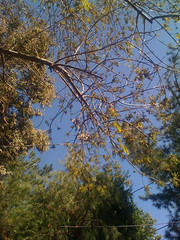 Taking a few moments in the garden this morning, I heard a gentle and general buzzing throughout. It seems the large ash tree in the back garden is flowering and the bees are taking great advantage of this bright sunny day after all our rain. More rain is expect tomorrow, so it is good they are so industrious. They may be stuck in their hives for a few more days.
Taking a few moments in the garden this morning, I heard a gentle and general buzzing throughout. It seems the large ash tree in the back garden is flowering and the bees are taking great advantage of this bright sunny day after all our rain. More rain is expect tomorrow, so it is good they are so industrious. They may be stuck in their hives for a few more days.Labels: 91411, apiary, ash, bees, california, City of Los Angeles, garden, gardener, gardening, hive, honey, insects, Los Angeles, Los Angeles California, losangeles, San Fernando Valley, tree
Labels: compost, garden, gardener, gardening, vermiculture, worm, worms
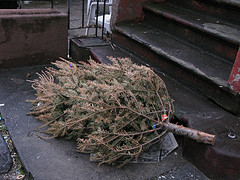 In the past, many Christmas trees were simply dumped curbside, on lawns or in empty lots. They would often site there for a month or more until someone decided to clean them up.
In the past, many Christmas trees were simply dumped curbside, on lawns or in empty lots. They would often site there for a month or more until someone decided to clean them up.
- Cut it up and place it in your standard green garden bin
- Leave it curbside, if it is too big to fit in the bin (or you are unable to dismantle it)
- Take your tree to a long list of drop-off sites around the city incuding various Parks and Recreation and Fire Station locations. This is a limited time option, though. You will only be able to do this on Saturday, January 2, 2010 and Sunday, January 3, 2010.
Labels: california, Christmas, City of Los Angeles, compost, garden, gardener, gardeners, gardening, Gardens, Home, Home and Garden, LA, Los Angeles, Los Angeles California, losangeles, mulch, outdoors, recycle, recycling, tree
Labels: calendar, fall, garden, gardener, gardeners, gardening, outdoors, video, weather
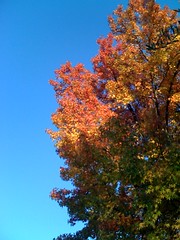 I know it may seem a bit off to be writing about the end of the gardening season at this late date, but here in California we are just seeing our first real taste of Fall. Many of you have probably already buttoned up your gardens for the season, while we were just receiving the first of our Winter rains on Halloween. Still, garden cleanup is a must here, just as it is in your gardens. I sometimes wish, though, that I had the hard deadlines that killing frosts and falling snow provides.
I know it may seem a bit off to be writing about the end of the gardening season at this late date, but here in California we are just seeing our first real taste of Fall. Many of you have probably already buttoned up your gardens for the season, while we were just receiving the first of our Winter rains on Halloween. Still, garden cleanup is a must here, just as it is in your gardens. I sometimes wish, though, that I had the hard deadlines that killing frosts and falling snow provides.| |
A Gardener's Notebook |
| Join the mailing list |
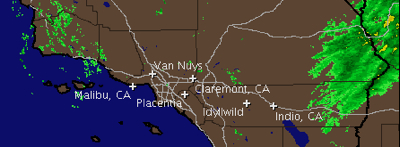

Labels: garden, gardener, gardeners, gardening, rain, weather
Hi! I saw your UTube video on repairs for drip lines...it was fantastic..thank you! I have another question, though..I hope this site is still active and that you can get back to me. I have a drip line leak at the site where the emitter line is plugged into the 1/2' drip line. The water is coming out pretty good around the site - but yet the feed tube line is not easy to pull out so I'm guessing that the hole isn't overly big???. I'm not sure what to do about this. There is always enough water to puddle up so it's a significant leak. Thanks for any help. bette

Labels: california, garden, gardener, gardeners, gardening

Labels: california, garden, gardener, gardeners, gardening, losangeles, podcast, podcasts, video
Labels: garden, gardener, gardeners, gardening, podcast, roses, video
Trommel Compost Sifter
This Instructable shows how to build a trommel (rotary screen) for sifting compost or shredded leaves. The purpose of sifting is to separate coarse unfinished compost materials from the finished product or to separate out trash and debris from other organic materials before use in the garden. My c...
By: SteveGerber
(Via explore.)
Labels: build, compost, DIY, garden, gardener, gardening, make
Summer reading for gardeners
With Austin on track for our hottest summer on record, I’ve sworn off any real gardening for the pleasures of garden book reading—inside, preferably under a ceiling fan with a cold Diet Dr. Pepper in my hand. Recent trips to Barnes & Noble and Half-Price Books have netted me about 10 lbs. of eye-candy-filled garden [...]
(Via Digging.)
Trench composting saves the day As fellow composter Simon Sherlock pointed out in the comments to my previous post, it will be some time before my new worm composter can take all my kitchen waste. Add too much in the early stages and the worms won't be able to eat it before some of the stuff putrefies, making the worms unhappy, and possibly dead. I forgot to say earlier that my solution to the excess kitchen waste problem, now that my allotment site has banned it from compost heaps, is trench composting. I am assuming the powers that be won't object because in trench composting,...
(Via Horticultural.)
Labels: compost, garden, gardener, gardeners, gardening, hobby, how-to, howto
Labels: garden, gardener, gardeners, gardening, halloween, holiday, pumpkin
How to build a rain water collectorIn this instructable, I will show how I made a rainwater collection system to water my garden. This helps to conserve water and make good use of a free and renewable resource.
Note that this involves using many different tools and proper safety precautions should always be taken.
The beginning -...
By: iPodGuy
(Via explore.)
Labels: build, garden, gardener, gardening, how-to, howto, make, outdoors
The Urban Compost Tumber Readers of this blog know I tend to get absorbed in the details of garden projects. But somehow the making of compost has been immune to such obsessions. To my mind, compost just happens. I...
(Continues)
(Via Cold Climate Gardening.)
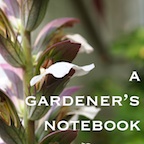

Labels: 91411, california, education, flowers, garden, gardener, gardeners, gardening, hobby, outdoors, weather
Labels: british, education, gardener, gardeners, gardening, how-to, howto, outdoors, video
Labels: books, british, england, flowers, garden, gardener, gardening, plant, plants, uk
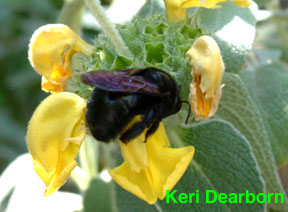 Super Pollinators
Super Pollinators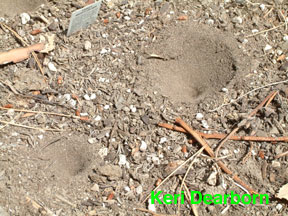 You probably know the lady bug and the praying mantis eat a variety of insect pests. But so do ground beetles, ant lions and paper wasps. The golden polistes, a large common paper wasp, is frequently sprayed and their papery nest knocked down from house eaves. Do they have a stinger? Yes, but they seldom sting people. These wasps prey on tomato worms and other caterpillars that dine on your flowers and vegetable garden.
You probably know the lady bug and the praying mantis eat a variety of insect pests. But so do ground beetles, ant lions and paper wasps. The golden polistes, a large common paper wasp, is frequently sprayed and their papery nest knocked down from house eaves. Do they have a stinger? Yes, but they seldom sting people. These wasps prey on tomato worms and other caterpillars that dine on your flowers and vegetable garden. Labels: california, garden, gardener, gardening, hobby, how-to, howto, outdoors
Tech Nation with Moira Gunn - Click to listenTechnorati Tags: garden, gardening, hobby, outdoors, insects, science, audio, itconversations, butterfly, book, books
Dr. Moira Gunn speaks with Kim Todd, who in her book "Chrysalis" recounts the tale of Maria Sibylla Merian and her documentation of the secrets of metamorphosis.
Labels: audio, book, books, butterfly, education, garden, gardener, gardening, hobby, insects, itconversations, outdoors, science
Removing Friction
Today's 10 Minutes in the Garden
Introduction
Labels: build, california, DIY, garden, gardener, gardening, grow, hobby, losangeles, outdoors
How to Make a Garden Feel Welcoming by Gordon Hayward
Use furnishings to create familiarity, invite lingering, and give a sense of coherence
Objects and structures can make a garden feel inviting and personal. A weathered birdbath (B on Site plan) passed on from the author's grandmother enhances a hosta bed.
Every time I walk past the 75-year-old birdbath in our garden here in southern Vermont, I recall when I first saw that cast-stone ornament as a boy in my late grandmother's garden near Oyster Bay, Long Island. It sat in the center of a boxwood-edged rose garden that was crisscrossed with crushed-oyster-shell paths. While visitors to our garden don't know what associations I hold with that birdbath, they can tell that it's old, that it anchors the broad curve of a hosta bed, and that birds do surely visit it. Objects such as this, rife with history and meaning, make our garden feel personal, anchored, and peaceful.
(Continues)
(Via Fine Gardening.)
Labels: build, DIY, garden, gardener, gardening, grow, hobby, how-to, howto, outdoors
California Water Wars When I drive through residential neighborhoods, and I see water flushing the streets from the garden hosing systems, I sometimes wonder if people even remember that the true nature of Los Angeles is to be a dry, desert land. And that bringing water to the city came at stupendous costs.
It's impossible to summarize the history of the Los Angeles aqueduct -- and the subsequent water wars -- in a
(Via LA Frog.)
Labels: california, education, garden, gardener, gardening, grow, learning, losangeles, outdoors
Labels: books, garden, gardener, gardening, learning, photography, read, reading

Labels: california, garden, gardener, gardening, losangeles, outdoors, weather
Labels: books, business, flowers, garden, gardener, gardening, grow
Labels: books, business, flowers, garden, gardener, gardening, read, toread
Labels: california, csun, event, garden, gardener, gardening, northridge, southern, tomato
Labels: bbc, british, education, england, garden, gardener, gardening, google, television, uk, video
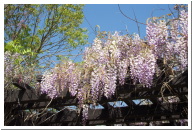 Annual Wilmington Wisteria Festival
Annual Wilmington Wisteria FestivalLabels: california, event, garden, gardener, gardening, losangeles, wisteria